Ever since Yamaha discontinued the YZF-R6 in 2020, there’s been a middleweight-shaped hole in the brand’s supersport lineup. The YZF-R7 did its best to fill the void in 2022, but the MT-07-derived model couldn’t hold a candle to the R6’s legend.
Soon, rumors of the YZF-R9 — a sport bike based on the popular MT-09 — surfaced. Trademark filings and World Supersport reports only fueled further speculation. By the time the Iwata OEM teased the R9 last Monday, it was already the worst-kept secret in motorcycling. Still, it wasn’t any less anticipated. Today, Yamaha finally put all the suspense to rest by unveiling the 2025 YZF-R9.
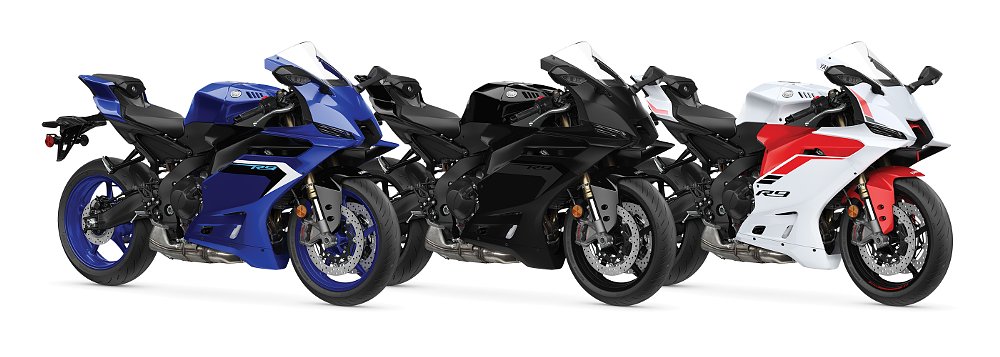
Happy medium
Yamaha made it quite clear. The R9 isn’t a direct replacement for the R6. Neither is it an all-out track bike. Instead, the middleweight endeavors to find the middle ground between roadway practicality and raceway performance. To that end, it not only borrows many of the MT-09’s core components but also tailors them to its needs.
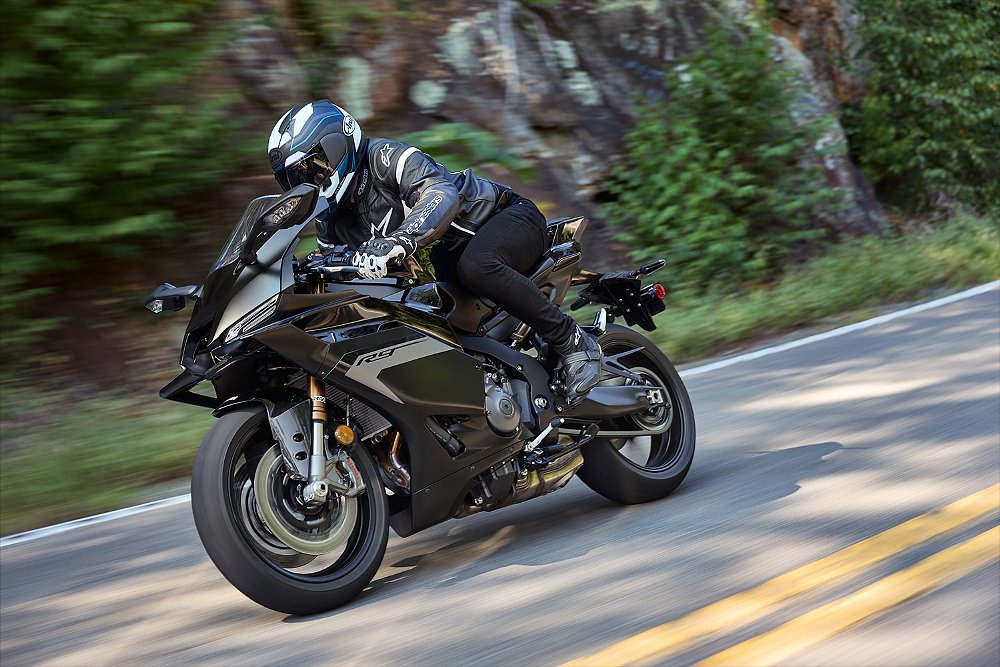
For example, Yamaha’s 890 cc inline triple remains mechanically unchanged within the R9. However, new ECU settings, a larger radiator, and a smaller rear sprocket (43-tooth versus the MT-09’s 45-tooth) suit the model’s supersport label. It’s a different story when it comes to the frame that the lightly revised engine resides in.
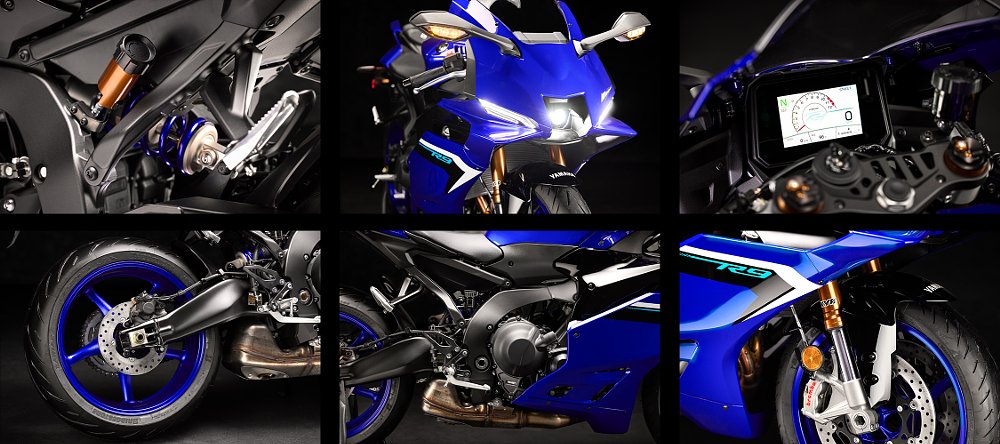
Team Blue developed the R9’s Deltabox frame specifically for the model, calling it the “lightest aluminum frame ever offered on a Yamaha Supersport model.” The firm also claims the unit is tuned for suppleness at low speeds and rigidity at high speeds. Another ideal feature for pulling double duty on the street and track. A new KYB fork lives up to supersport expectations with full adjustability, while the KYB shock quickly adapts to changing loads with its remote preload adjuster knob.
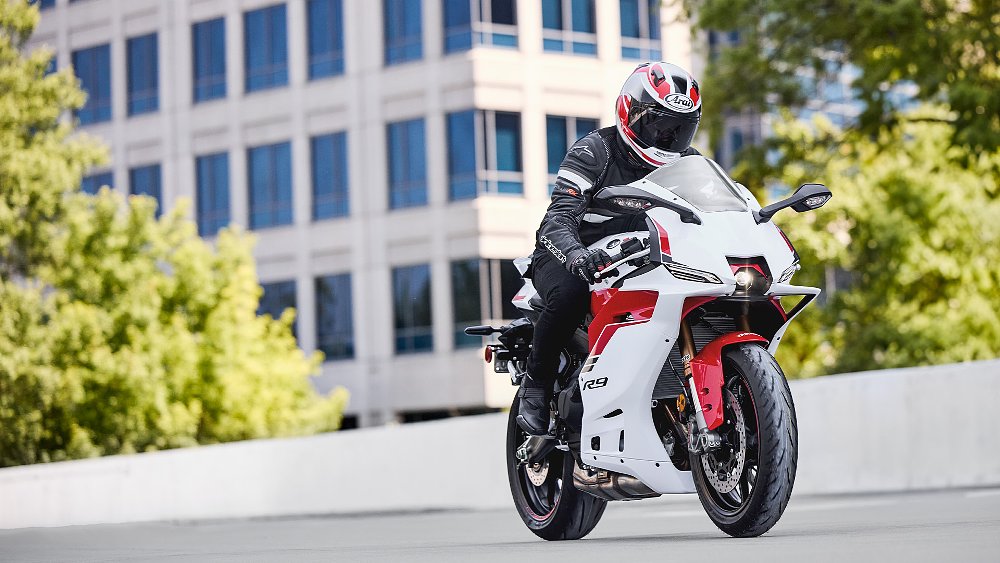
Not everything needs to be all-new, though. For one, the front braking system consists of the same Brembo Stylema calipers and Brembo master cylinder found on the MT-09 SP. The R9 also touts the same swingarm, switchgear, and five-inch TFT display found on its naked counterpart.
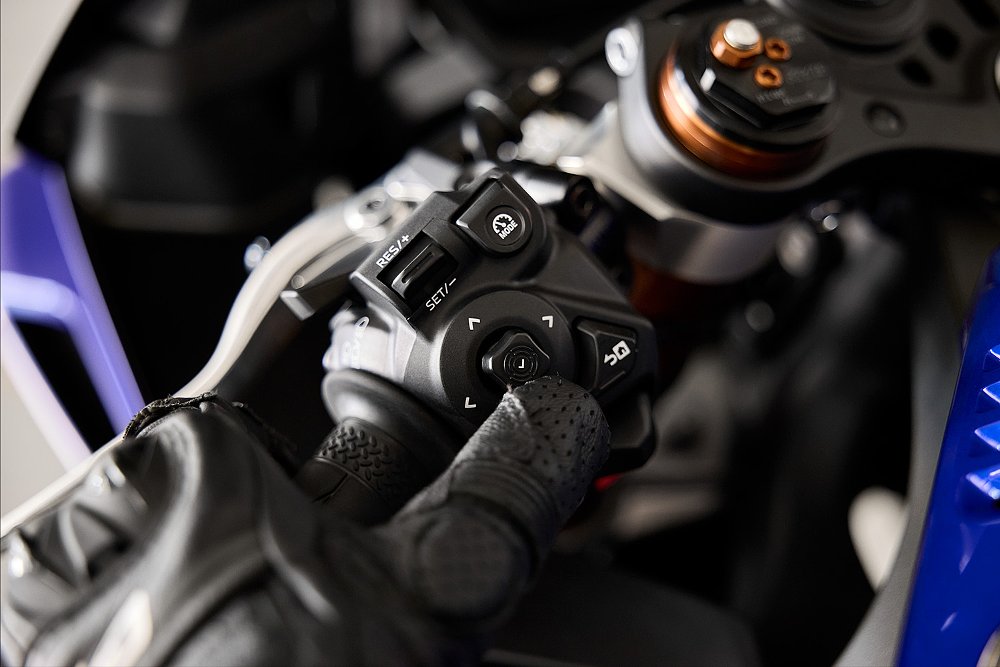
Many of the MT-09’s rider aids carry over, as well. Be it on public roads or a private course, IMU-aided features like traction control, slide control, cornering ABS, and lift/wheelie control prioritize safety. Conversely, a bi-directional quickshifter caters to performance. No matter the circumstances, five ride modes (Street, Sport, Rain, Track, and Custom) prepare the R9 for the current conditions.
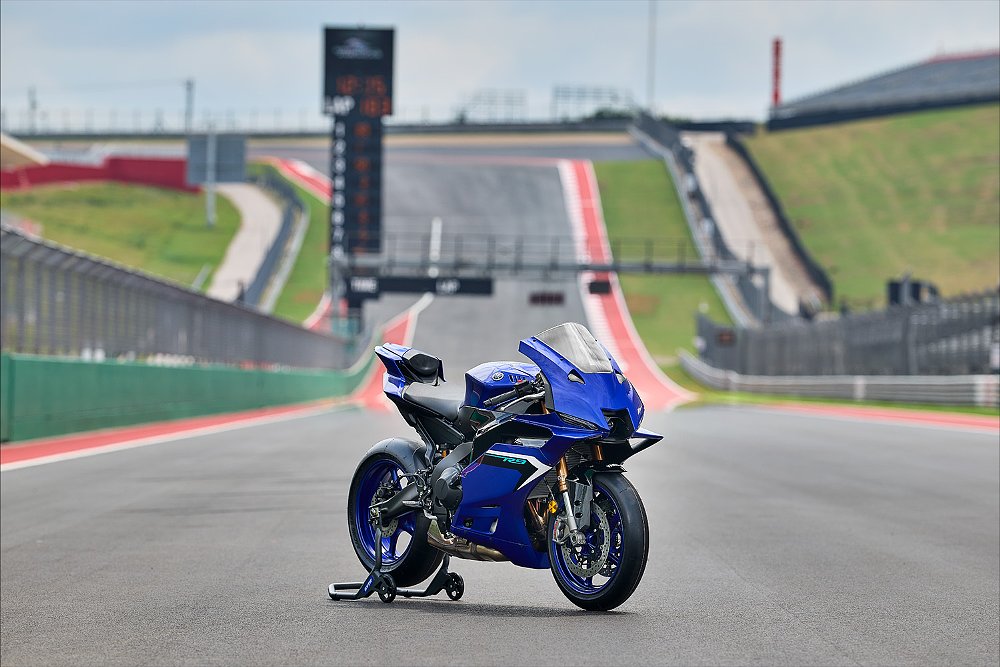
The R9 enters the middleweight supersport segment with aggressive styling, components, and ambitions, but nothing’s more aggressive than the model’s $12,499 starting price. That’s just $200 more than Yamaha’s MT-09 SP and $1,900 over its base model MT-09. It’s been a long time coming, but when the YZF-R9 arrives in Yamaha dealerships in March 2025, the hole left by the R6 will finally be filled.
Sneak peek
Prior to the R9’s official debut, Yamaha Motor USA invited Common Tread to a media-only sneak peek in Los Angeles. Living less than two miles from the venue, I was the obvious choice to attend. Like I said before, the R9 was the worst-kept secret in motorcycling. I fully expected Yamaha to unveil the model at this event. With the winged R1 announced a few weeks earlier, I also expected the R9 to wear winglets, too. What I didn’t expect was the R9 to be comfortable. Well, let me rephrase that. I didn’t expect the R9 to be not uncomfortable.
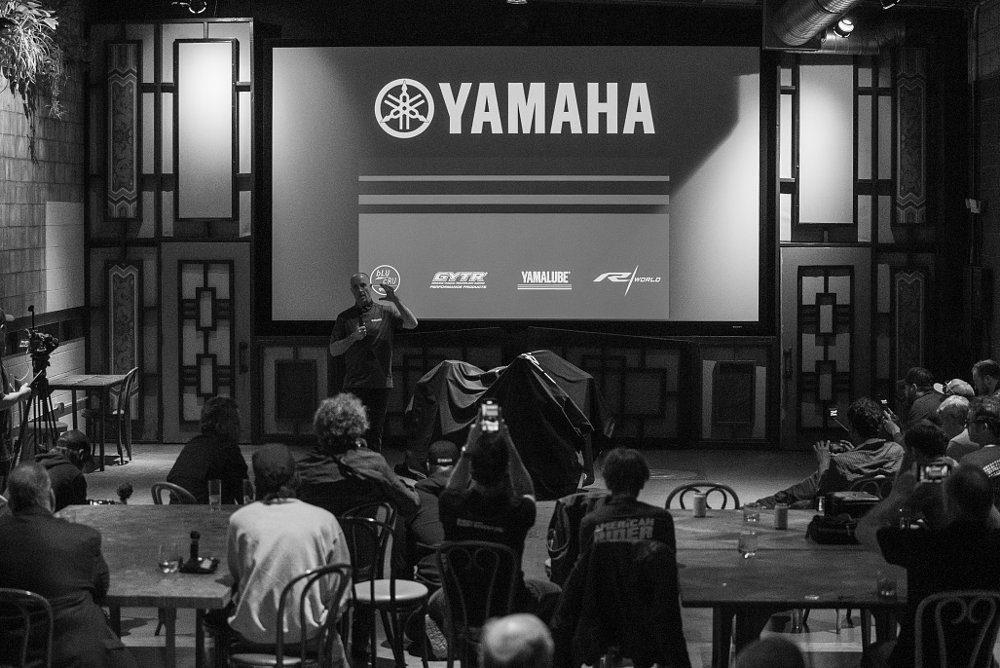
The R7’s seating position is notoriously aggressive for a light middleweight sport bike. I anticipated the R9 to lean in that same direction. I was relieved that my expectations were wrong. With its clip-ons positioned between the R7’s and the R6’s controls (in height), the reach to the bars wasn’t too much of a stretch. The 32.7-inch seat height was far from intimidating and the wide 3.7-gallon fuel tank felt great between my knees. Even the legroom was adequate. For a sport bike, that is.
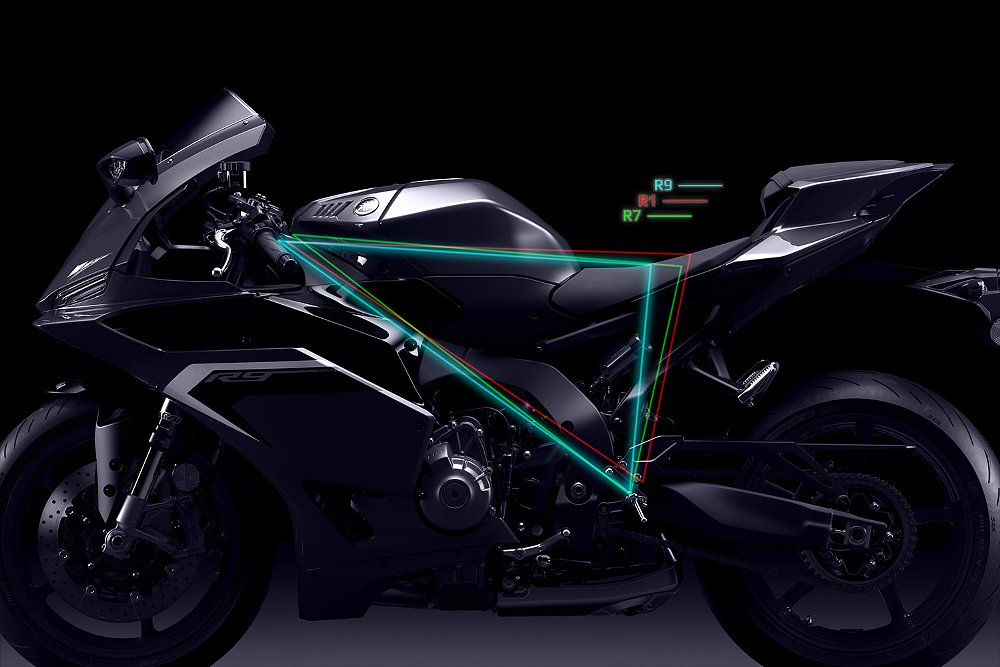
Of course, I could only judge the seating position with the bike lifted off the kickstand. For a full assessment of the R9’s ergonomics (and beyond), look out for Common Tread’s first-ride review in April 2025. Until then, let us know what you want to know about Yamaha’s latest supersport entry.
| 2025 Yamaha YZF-R9 | |
|---|---|
| Price (MSRP) | $12,499 |
| Engine | 890 cc, liquid-cooled, 12-valve, inline three-cylinder |
|
Transmission, final drive |
Six-speed, chain |
| Claimed horsepower | 117 @ 10,000 rpm |
| Claimed torque | 68.6 foot-pounds @ 7,000 rpm |
| Frame | Aluminum twin spar |
| Front suspension | 43 mm KYB inverted fork, adjustable for preload, compression, and rebound damping; 4.7 inches of travel |
| Rear suspension | KYB monoshock, adjustable for preload, compression, and rebound damping; 4.6 inches of travel |
| Front brake | Dual Brembo Stylema four-piston calipers, 320 mm discs with ABS |
| Rear brake | Single caliper, 220 mm disc with ABS |
| Rake, trail | 22 degrees, 3.7 inches |
| Wheelbase | 55.9 inches |
| Seat height | 32.7 inches |
| Fuel capacity | 3.7 gallons |
| Tires | Bridgestone Battlax Hypersport S22, 120/70R17 front, 180/55R17 rear |
| Claimed weight | 430 pounds wet |
| Available | March 2025 |
| Warranty | 12 months |
| More info | yamahamotorsports.com |













